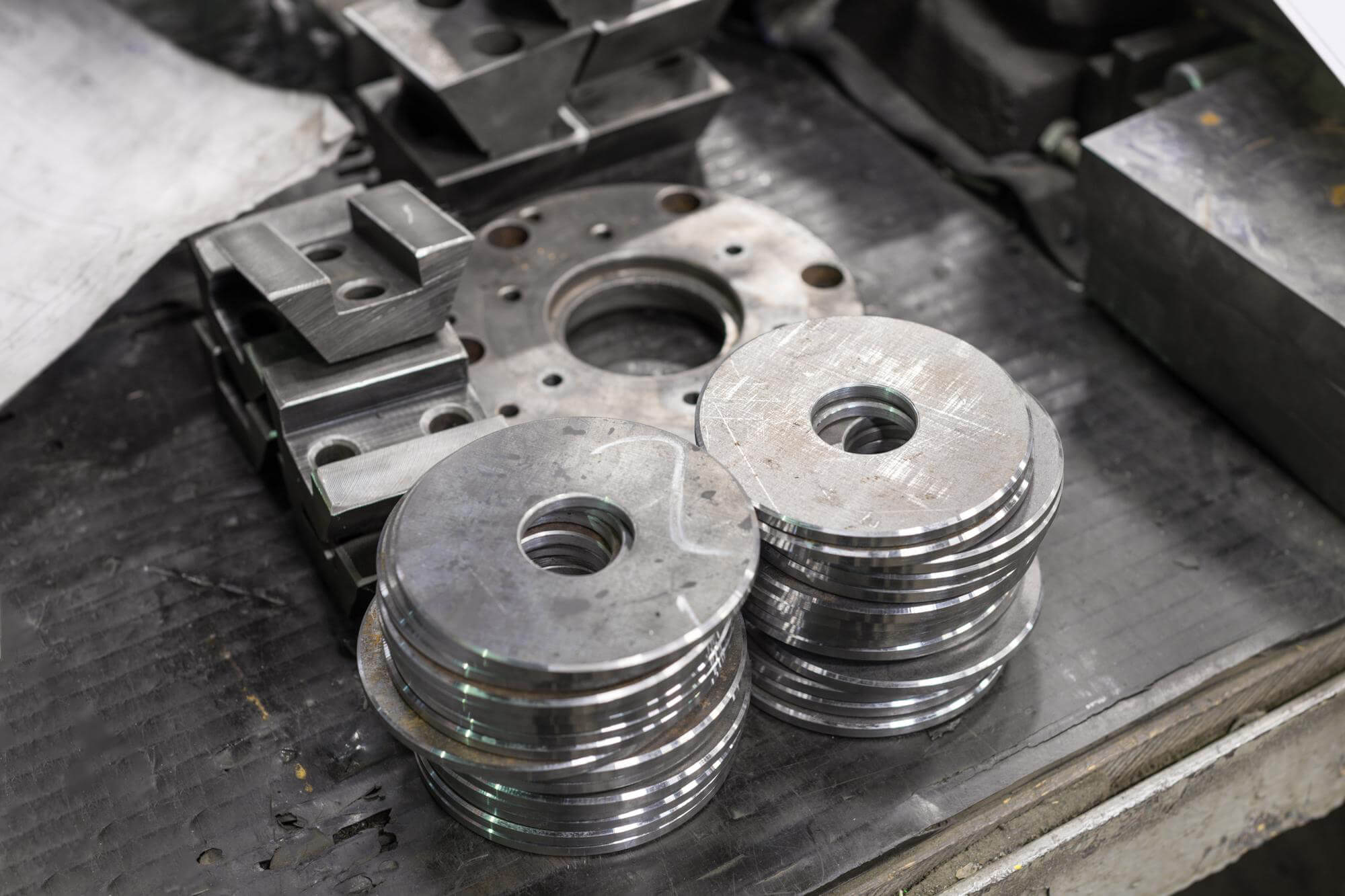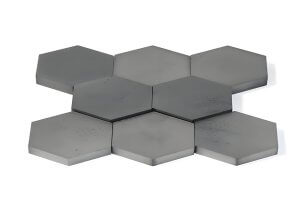In the world of CNC machining, achieving high surface quality in machined parts and flanges is crucial. Especially when dealing with complex geometries and hard-to-cut materials, the challenge becomes even more significant. This article will delve into how high-speed machining (HSM) plays a pivotal role in enhancing the surface quality of CNC machined parts, with a special focus on flanges. Whether you’re a buyer looking to procure custom flanges or simply interested in understanding how machining works, this article will provide valuable insights.
Understanding Surface Quality in CNC Machining
Surface quality in CNC machining refers to the finish or smoothness of the surface of a machined part. It’s an essential factor in the performance and durability of a component, influencing attributes like fatigue resistance, corrosion resistance, and wear resistance. The primary indicators of surface quality include surface roughness, residual stress, and surface hardening. When machining flanges, especially those used in high-pressure environments, these factors are critical to ensuring long-term reliability.
Surface Roughness
Surface roughness is the most commonly discussed aspect of surface quality. It refers to the small, fine irregularities on the surface of a machined part. These irregularities can affect the performance of a part in various ways, including its ability to form a tight seal or its resistance to corrosion. For instance, in flange manufacturing, a smooth surface is vital for achieving proper sealing and ensuring that the flange performs its function without leaks.
Residual Stress and Surface Hardening
Residual stress and surface hardening are less visible but equally important. Residual stress refers to the internal stresses locked within a material after machining. If not controlled, these stresses can lead to warping, cracking, or even failure of the part over time. Surface hardening, on the other hand, occurs when the outer layer of a material becomes harder due to the machining process, potentially improving wear resistance but also introducing brittleness.
The Role of High-Speed Machining (HSM)
High-speed machining has revolutionized the CNC machining industry by offering a way to enhance surface quality while also boosting productivity. This technique involves cutting at speeds significantly higher than those used in conventional machining, which leads to various benefits.
Enhanced Surface Finish
One of the most notable advantages of HSM is its ability to produce a superior surface finish. When machining at high speeds, the material removal process becomes smoother, reducing the amount of heat generated and minimizing the formation of burrs or other surface imperfections. This results in a lower surface roughness, which is particularly important for parts like flanges that require a precise and smooth finish.
Reduced Residual Stress
HSM also helps in reducing residual stress within the machined part. By using sharp, high-quality cutting tools and optimizing cutting parameters, HSM minimizes the forces acting on the material, which in turn reduces the amount of stress induced during the machining process. This is crucial for flanges, where excessive residual stress could lead to deformation or failure under high-pressure conditions.
Improved Surface Hardening Control
While surface hardening can be beneficial in certain applications, it needs to be controlled carefully. HSM allows for better management of surface hardening by enabling precise control over the cutting temperature and material deformation. This ensures that the surface layer remains hard enough to resist wear without becoming too brittle.
Optimizing HSM for Flange Manufacturing
To maximize the benefits of HSM in flange manufacturing, several factors need to be considered. These include the selection of cutting tools, cutting parameters, and the material being machined.
Cutting Tool Selection
The choice of cutting tools is critical in HSM. Tools made from advanced materials like polycrystalline cubic boron nitride (PCBN) or ceramics are preferred for their ability to maintain sharpness and resist wear at high cutting speeds. These tools also help in achieving a finer surface finish and reducing residual stress.
Cutting Parameters
Optimizing cutting parameters such as cutting speed, feed rate, and depth of cut is essential for achieving the desired surface quality. For example, increasing the cutting speed can improve the surface finish, but it needs to be balanced with the tool’s ability to withstand the increased temperature. Similarly, adjusting the feed rate can influence the surface roughness and the amount of residual stress.
Material Considerations
Different materials respond differently to HSM. For instance, harder materials like stainless steel or titanium alloys require higher cutting speeds and more robust tools to achieve a smooth finish. In contrast, softer materials like aluminum may achieve the desired surface quality at lower speeds. Understanding the material’s properties and how they interact with HSM is key to successful machining.
Case Study: High-Speed Machining of Stainless Steel Flanges
To illustrate the impact of HSM on surface quality, let’s consider a case study involving the high-speed machining of stainless steel flanges. Stainless steel is known for its toughness and resistance to corrosion, making it a popular choice for flanges used in harsh environments. However, its hardness also makes it challenging to machine.
Setup and Parameters
In this case, the flanges were machined using a CNC milling machine equipped with PCBN cutting tools. The cutting speed was set to 800 meters per minute, with a feed rate of 0.1 mm per tooth. The depth of cut was kept at 0.5 mm to ensure minimal tool wear and maximum surface finish.
Results
The results showed a significant improvement in surface quality compared to conventional machining methods. The surface roughness (Ra) was reduced to just 0.1 micrometers, which is comparable to the finish achieved by grinding. Additionally, the residual stress levels were much lower, reducing the risk of warping or failure under pressure. The surface hardening was controlled effectively, resulting in a flange that was both durable and resistant to wear.
Practical Tips for Buyers of CNC Machined Flanges
For buyers of custom flanges, understanding the role of HSM in enhancing surface quality can help in making informed decisions. Here are some practical tips:
- Specify Surface Quality Requirements: When placing an order for CNC machined flanges, clearly specify your requirements for surface roughness, residual stress, and surface hardening. This will ensure that the supplier uses appropriate machining techniques to meet your needs.
- Ask About Machining Techniques: Inquire about the machining techniques used by your supplier. If they use high-speed machining, ask for details about the cutting tools, parameters, and material considerations. This will give you confidence in the quality of the final product.
- Request Quality Assurance: Ensure that the supplier provides quality assurance for the machined flanges, including detailed reports on surface roughness, residual stress, and other relevant parameters. This will help in verifying that the flanges meet your specifications.
- Consider the Material: Depending on the material of the flange, different machining techniques may be required to achieve the desired surface quality. For example, stainless steel and titanium alloys may require different cutting tools and parameters compared to aluminum or brass.
- Evaluate Cost vs. Quality: While high-speed machining can improve surface quality, it may also increase the cost of production. Evaluate the trade-off between cost and quality to determine the best approach for your application.
Conclusion
High-speed machining is a powerful tool in the CNC machining industry, offering significant benefits in terms of surface quality, especially for critical components like flanges. By understanding the impact of HSM on surface roughness, residual stress, and surface hardening, buyers can make more informed decisions and ensure that they receive high-quality CNC machined parts that meet their specific needs. As the demand for precision and durability in machined parts continues to grow, the importance of advanced machining techniques like HSM will only increase.
Other Articles You Might Enjoy
- The Secrets of Efficient Cutting for Hard-to-Cut Materials in CNC Machining
Introduction: The Unique Challenges of Hard-to-Cut Materials In the fast-paced world of manufacturing, precision is key, and the ability to work with a wide range of materials is essential. However,…
- CNC Machining for Medical Applications: Compliance and Material Selection?
Introduction to CNC Machining in Medical Applications CNC or Computer Numerical Control machining is a manufacturing process wherein pre-programmed computer software dictates the movement of factory tools and machinery. This…
- Beyond Cutting: Exploring the Multifaceted CNC Machining Process
1. Introduction: Unveiling the Layers of CNC Machining In this introductory section, we peel back the layers of the CNC machining process, going beyond the traditional understanding of cutting. It…
- Exploring Bead Blasting In CNC Machining(cnc cutting tools Hale)
Bead blasting is a crucial technique applied extensively in the realm of Computer Numerical Control (CNC) machining. This process transforms the exterior aesthetics and surface quality of machined parts, augmenting…
- Comparing Machinability of Various Tool Steels: What's the Best Choice?
Understanding Tool Steels and their Machinability Tool steels are referred to as an extensive variety of carbon and alloy steels known for their distinctive hardness, abrasion resistance, and ability to…
- Understanding Bead Blasting in CNC Machining(cnc cutting tools Miles)
CNC machining is a manufacturing process known for its precision and versatility. One important aspect of this process that contributes significantly to both its functionality and finish quality is bead…






